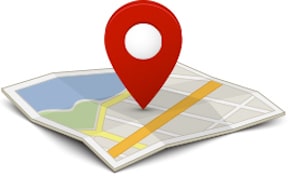
Expand Your eCommerce Horizons with Geolocation
Create a plan to grow your customer base
If you’re running an eCommerce store, it’s easier than you think to expand your storefront beyond your national borders. This can be a great way to grow your customer base, and tap into an entirely new market with new sales opportunities. However, there are still numerous things to consider, and different laws and practices to take into account with each country you add to your repertoire. Be sure to create a detailed plan on your expansion, so that you’re prepared to tackle international orders quickly and efficiently.
Find a Geolocation Integration
The first step in all of this is to make sure you have a robust geolocation integration! This entire topic is moot if your site can’t tell where your customers are located. Any changes you make for different countries won’t apply if you don’t know when somebody from that country is looking at your pages. Depending on your eCommerce platform of choice, this feature may come included, or you may need to find an add-on. If you come up dry elsewhere, don’t forget about the Google API for Geolocation, it can be a lifesaver, even if it takes a little extra work.
Taxes
When considering what needs to be different between the offerings in different countries, let’s start with one of the most fundamental issues: taxes. Each country (and sometimes even different regions within a country) have different laws and regulations surrounding taxes. For each country on your expansion wishlist, you’ll need to be sure to do some research on what their tax situation looks like. Then, you’ll need to make sure you’re both a) properly collecting the necessary taxes, and b) have a system set up to pay those taxes to the applicable parties. This can be easy to overlook in the excitement of setting up a new virtual storefront, but is also one of the issues that can cause you the most trouble if you don’t take the proper care to set up your necessary systems.
Shipping
Another of the more logistical issues to consider is shipping, both the methods and costs. Obviously, if you’re selling virtual products or services, then you don’t need to consider this. But any physical product will need a supply line to reach any new country you’re looking to expand into. First up is shipping methods – can you use the same methods as your domestic sales, or do you need to find new solutions? If you’re using the same methods, do you need to do an extra setup or sign any agreements to expand? If you’re finding new ones, are they reputable and trustworthy? Do you offer express shipping, or just standard? Then, once you’ve settled on your methods, you’ll need to configure different shipping prices for the added country to make sure you’re not losing money in the logistics.
Product Availability
After evaluating your shipping plans and expenses, you may find it’s not worth the cost of shipping certain items internationally. Or, if some of your services include face-to-face visits, it may not be possible to offer them internationally. Thankfully, you can hook into your geolocation integration to flat out exclude certain products in certain countries. While it may be a bummer that you can’t offer the full selection worldwide, it’s better in the long run to know your limits. Stretching yourself too thin will only result in extra stress and unsatisfied customers, so make sure you’re only offering the products you know you can optimally fulfill.
Product Price & Currency
Outside of shipping, there may be additional overhead or other costs to consider when selling products or services internationally. It’s not unreasonable to charge different prices on the same product for a different region of the world. Time is money, and even if processing an international order only takes a few extra minutes, those minutes add up quickly. Try to catch any differences in process when fulfilling international orders, no matter how small, and include them in your calculations.
Even if you decide to charge the same price, be sure you keep an eye on currency too. Many integrations will calculate the exchange rate for you, but they may not take into account the logistical fees of actually exchanging that currency. Keep an eye on what happens when you take payments in a different type of money, and include that in your calculations as well. You may discover the need to raise your price if you have small margins to cover it.
Payment Methods
Some payment methods, like PayPal, are built to be international. Some are semi-international, so if you only take a limited number of credit cards for instance, you may need to expand your selection if it doesn’t include the most popular card of your new country. Others are not international at all, like if you offer financing options, it’s unlikely that they’ll accept loans from overseas. Be sure to restrict or expand your payment options at checkout depending on both what’s available and what makes the most logistical sense.
Frontend Information
Once you’ve sorted out your plan for international selling, it’s time to ensure the frontend of your website accurately reflects what you offer in different countries. Some of these take care of themselves – payment methods and shipping methods should automatically update with a proper geolocation integration, and most eCommerce solutions will change the checkout form to be accurate no matter what country is selected.
However, there are still important things to consider in your marketing efforts. Do you want to offer that same 10% coupon for signing up for a newsletter to international customers, or are you margins tighter? Do you promote financing deals on your site anywhere, that doesn’t apply to people in other countries? Do you showcase a product anywhere that you’ve decided to only sell domestically? Take a comb through your site, and make sure your foreign audience isn’t tempted by deals or items that aren’t actually available to them.
It may seem like a lot to get your international storefront going, but the expansion in your customer base can certainly be worth the effort! Need some help planning, or finding the best geolocation integration for your site? Don’t hesitate to reach out to Mr. WPress for a free quote! We’d be delighted to help you start selling to the whole world.



